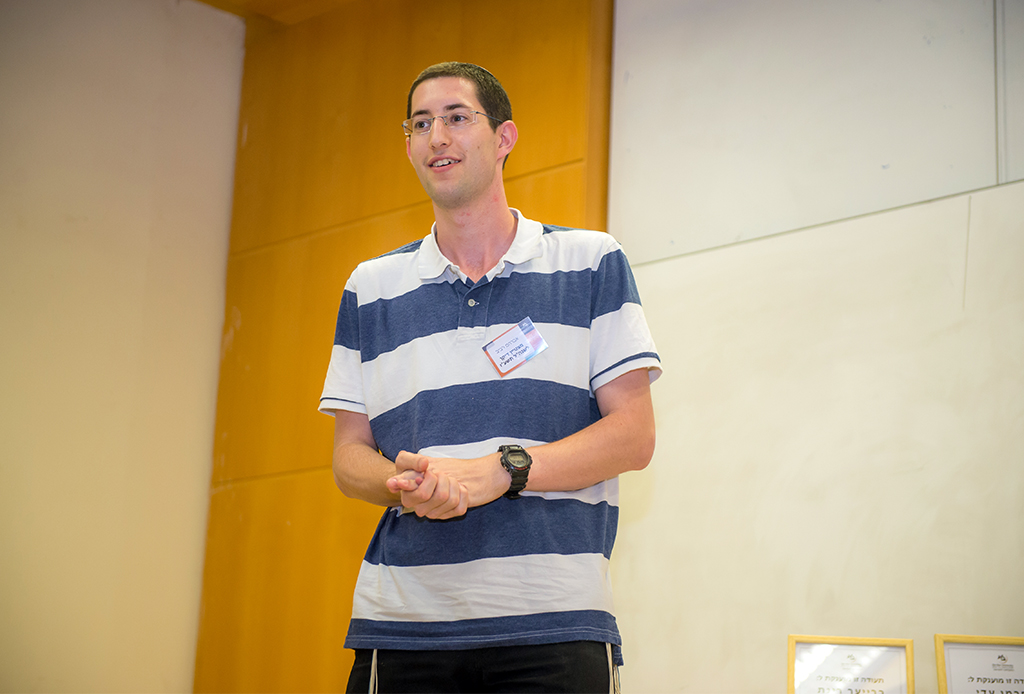I decided to pick up the gauntlet”

Avraham Raviv couldn’t find any Hebrew materials on Machine Learning and Deep Learning – so he decided to create them on his own. His book is in its late writing stages, and the chapters are available online for free.
Master’s student Avraham Raviv (28, married +2) ran into a problem typical of many master’s students on the direct track: he had to make up a lot of the material on his own. “In my research, guided by Dr. Hillel Kugler, we use formal verification tools in order to improve ML and DL solutions. The research started before I even took any advanced courses,” he says, “so it wasn’t easy: I realized that there are no books in Hebrew on AI. None. So I decided to pick up the gauntlet and write my own book on the subject.”
Is it surprising that a student takes it upon himself to write a book on a subject he’s still learning? Not for Raviv, with a B.Sc in electrical engineering from Bar-Ilan University (specializing in signal processing and bioengineering). He already published a book once before, on a totally different subject: “Bechol Et Yikon,” lessons on the High Holidays by R. Ran Halili, which Raviv edited. He already knew the ropes. “I started out by reading books and tables of contents, course syllabi, and created a table of contents for a book on ML and DL,” he says, “everything you need to know in the field. The book is divided into three sections: introduction and basic algorithms in ML, foundations, and introduction to DL, and advanced topics in DL.”
Next came the writing portion: “I started writing summaries for each topic by reading blogs, articles and books, and watching online lectures,” he recounts, “but eventually I realized that I need a partner with a profound understanding in the field, and turned to Dr. Mike Erlihson. I met him through the web, he writes summaries and reviews of papers on current, advanced topics in DL in a project called DeepNightLearners. I asked Dr. Erlihson to go over my texts and help with ones that were more complex, and he happily agreed.”
Their collaboration went smoothly. Raviv did most of the writing, while Dr. Erlihson reviewed the material, added his notes, and wrote chapters on advanced subjects. The two also created a GitHub user and started uploading the contents. Once enough texts had accumulated, they began sharing the book on Facebook and LinkedIn, linking to the project’s website. The two started getting positive feedback. Students and professionals wrote in, asking to join the project and contribute. “The book currently has almost 150 pages, and we’ve finished writing the first two sections. Over ten people joined us along the way, among whom are Faculty of Engineering alumni, who also wanted to contribute and share their knowledge and experience in advanced subjects,” says Raviv. “We asked them what their fields of interest were, and assigned them sub-subjects we planned to include. The book keeps developing, and we are constantly adding more chapters and advanced subjects.”
The book’s major advantage, believes Raviv, is that it goes back to basics, but goes on to include up-to-date content. “If someone wants to take their first steps in the field, that’s the doorway: current principles and architectures, including a comprehensive mathematical introduction that gives the reader everything they need,” he says. Another no less important advantage is that the book is already available for FREE download, and it will remain free, even after it is complete. “I don’t have a financial model and I don’t intend to charge for it,” Raviv clarifies, “I’m doing this for myself: it helps me get a deeper understanding, cross reference, delve deeper, and open up to new ideas. In addition, I see it as a contribution to the community, a way to help people who want to join this fascinating field.”
So where are we at today? The foundation is already complete, and Raviv – who intends to take a summer internship at Samsung and then pursue his PhD at the Faculty of Engineering – expects the book to be ready within a year. At the same time, he sees it as a continuous project, since the field is constantly developing, and new topics will come up as time progresses. “In that sense,” he confesses, “the term ‘book’ is a bit misleading. We have no intention of printing it because that involves a lot of technical work that comes at the expense of adding new content. We care more about making these contents available to everyone. The content we’re creating actually adapts itself and suits even people who have been in the field for a while, because it is constantly updated with the newest articles in the field.”
Last Updated Date : 14/04/2021



